 According to the most recent National Survey on Drug Use and Health (NSDUH), 9.4% of the population aged 18 or older used an illicit drug in the past month. The Quest Diagnostics Drug Testing Index™ (DTI) paints a different picture wherein ‘only’ 4.2% of the more than 10 million urine drug tests we performed in 2017 tested positive.
According to the most recent National Survey on Drug Use and Health (NSDUH), 9.4% of the population aged 18 or older used an illicit drug in the past month. The Quest Diagnostics Drug Testing Index™ (DTI) paints a different picture wherein ‘only’ 4.2% of the more than 10 million urine drug tests we performed in 2017 tested positive.
So why is there a disparity in the data and what can employers do to mitigate the risks of employing drug users?
Unique populations
The NSDUH collects data from a representative sample of the total U.S. population, whereas DTI data only comes from U.S. employers who perform drug testing. Breaking down NSDUH data a level deeper, 9.1% of respondents who are employed full-time reported drug use in the past month, which is significantly lower than the 13.7% of part-time and 18.2% of unemployed respondents.
It stands to reason that most illicit drug users don’t want to get caught, so they either remain unemployed or avoid working for companies who drug test. The single best way to mitigate the risks of workplace drug use is to actively drug test. Self-reported drug use rates will always be higher than tested positivity in large part because drug users gain employment with companies who don’t test. This means that employers without drug testing programs likely employ more drug users among their ranks than organizations who do test.
Many testing programs fail to detect some drug use
Using a drug one time in the past month should include a respondent in the NSDUH’s 9.4%. However, that same individual may not necessarily test positive on a drug test. Four main reasons jump to mind:
- Drug test cutoff levels
It is possible for a donor to have low levels of a drug in their system and to test negative, as the drug concentration must surpass a defined cutoff level. A test is only reported positive when a drug or drug metabolite is identified at a concentration equal to or above the cutoff. Cutoff levels are set to allow room for a donor’s incidental exposure and to account for the recency, frequency, or volume of use.
- Drug test panels
Not all drug test panels test for all drugs. It’s possible for someone to self-report using a drug that is not included in the employer’s drug testing panel. While the most commonly used panels test for amphetamine, cocaine, codeine, heroin, marijuana, methamphetamine, morphine, and PCP, there are dozens of other drugs that are only tested using broader testing panels.
- Detection windows
Drug tests will only detect drug use for a certain period of time. While that window is dependent on the specimen type, individual donor, and frequency of drug use, it is theoretically possible for drug use to occur distantly enough from the time of the test to render a negative result.
- Reasons for testing
The majority of workplace drug tests are performed for pre-employment. At some companies, this is the only drug test an employee may ever take, making it possible for individuals to return to using drugs without the risk of additional testing.
Employers looking to create and maintain drug-free workplaces can tip the odds in their favor by specifying sensitive cutoffs levels, leveraging broad testing panels, including a mix of specimen types in their programs, and screening employees throughout their tenures with random testing, post-accident testing, reasonable suspicion testing, etc.
The leapfrog and lifetime effects
Say I’m an unemployed, active drug user in the 18.2% cohort reported by NSDUH. I’ve decided it’s time to get a job. I apply, interview, and get tested at a company that leverages a Quest Diagnostics drug test. I don’t pass my drug test and I fail to get the job. I leapfrog onto the next employer and get the same result. I continue this process until I finally obtain employment at a company who doesn’t drug test. At some point, it’s a fair assumption that the ratio of drug using applicants is higher at companies that lack a testing program, while employers who drug test maximize the advantages of the additional candidate screening process.
Two additional pieces of NSDUH data paint an even more compelling pre-employment and ongoing testing picture: while past month use is 9.4%, past year use jumps to 15.7%, and lifetime use leaps all the way up to 51.2%.
While some employers and industries may believe they are immune to the risks and potential negative impacts of employee drug use, as we consider drug testing benefits, including reduced theft, accidents, turnover, absenteeism, downtime, injuries, and workers’ compensation claims, as well as improved morale, safety, and productivity, it’s hard to imagine a scenario where a drug-free workplace created through a rigorous testing program isn’t a smart idea for every employer. Employers that agree with this data should be drug testing. Non-testing employers should be aware that they are acquiring the lion’s share of the drug-using population – and the inherent risk.
For more information about drug testing, visit our website.
 Your Privacy Choices
|
Privacy Notices
|
Terms
|
Language Assistance / Non-Discrimination Notice | Asistencia de Idiomas / Aviso de no Discriminación | 語言協助 / 不䈚視通知
Your Privacy Choices
|
Privacy Notices
|
Terms
|
Language Assistance / Non-Discrimination Notice | Asistencia de Idiomas / Aviso de no Discriminación | 語言協助 / 不䈚視通知



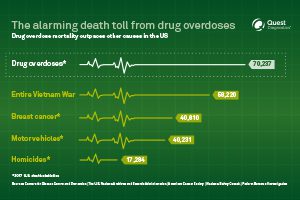





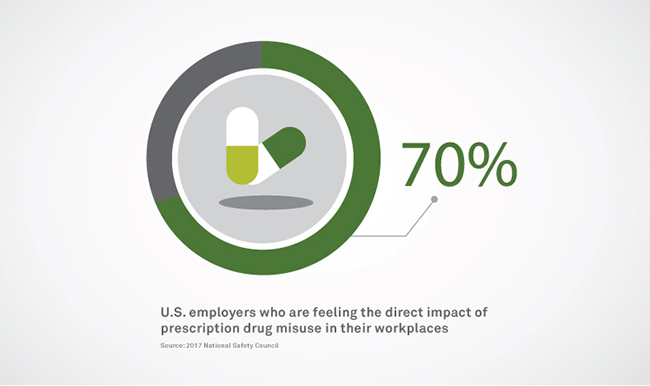

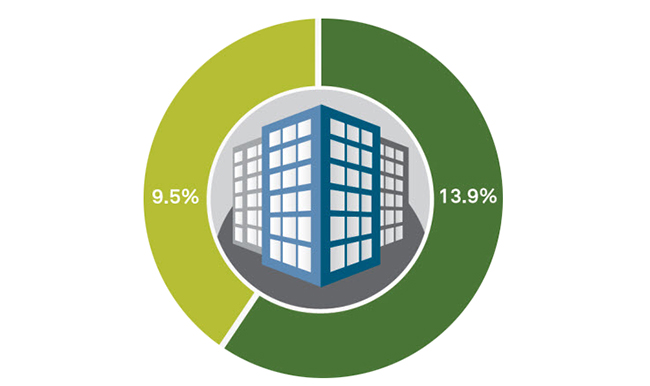

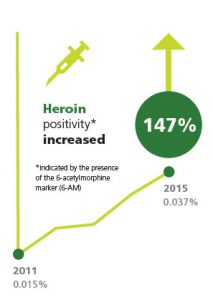
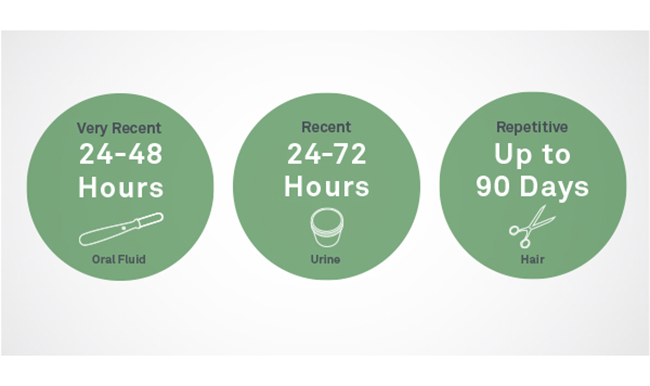




So why is there a disparity in the data and what can employers do to mitigate the risks of employing drug users?
Unique populations
The NSDUH collects data from a representative sample of the total U.S. population, whereas DTI data only comes from U.S. employers who perform drug testing. Breaking down NSDUH data a level deeper, 9.1% of respondents who are employed full-time reported drug use in the past month, which is significantly lower than the 13.7% of part-time and 18.2% of unemployed respondents.
It stands to reason that most illicit drug users don’t want to get caught, so they either remain unemployed or avoid working for companies who drug test. The single best way to mitigate the risks of workplace drug use is to actively drug test. Self-reported drug use rates will always be higher than tested positivity in large part because drug users gain employment with companies who don’t test. This means that employers without drug testing programs likely employ more drug users among their ranks than organizations who do test.
Many testing programs fail to detect some drug use
Using a drug one time in the past month should include a respondent in the NSDUH’s 9.4%. However, that same individual may not necessarily test positive on a drug test. Four main reasons jump to mind:
It is possible for a donor to have low levels of a drug in their system and to test negative, as the drug concentration must surpass a defined cutoff level. A test is only reported positive when a drug or drug metabolite is identified at a concentration equal to or above the cutoff. Cutoff levels are set to allow room for a donor’s incidental exposure and to account for the recency, frequency, or volume of use.
Not all drug test panels test for all drugs. It’s possible for someone to self-report using a drug that is not included in the employer’s drug testing panel. While the most commonly used panels test for amphetamine, cocaine, codeine, heroin, marijuana, methamphetamine, morphine, and PCP, there are dozens of other drugs that are only tested using broader testing panels.
Drug tests will only detect drug use for a certain period of time. While that window is dependent on the specimen type, individual donor, and frequency of drug use, it is theoretically possible for drug use to occur distantly enough from the time of the test to render a negative result.
The majority of workplace drug tests are performed for pre-employment. At some companies, this is the only drug test an employee may ever take, making it possible for individuals to return to using drugs without the risk of additional testing.
Employers looking to create and maintain drug-free workplaces can tip the odds in their favor by specifying sensitive cutoffs levels, leveraging broad testing panels, including a mix of specimen types in their programs, and screening employees throughout their tenures with random testing, post-accident testing, reasonable suspicion testing, etc.
The leapfrog and lifetime effects
Say I’m an unemployed, active drug user in the 18.2% cohort reported by NSDUH. I’ve decided it’s time to get a job. I apply, interview, and get tested at a company that leverages a Quest Diagnostics drug test. I don’t pass my drug test and I fail to get the job. I leapfrog onto the next employer and get the same result. I continue this process until I finally obtain employment at a company who doesn’t drug test. At some point, it’s a fair assumption that the ratio of drug using applicants is higher at companies that lack a testing program, while employers who drug test maximize the advantages of the additional candidate screening process.
Two additional pieces of NSDUH data paint an even more compelling pre-employment and ongoing testing picture: while past month use is 9.4%, past year use jumps to 15.7%, and lifetime use leaps all the way up to 51.2%.
While some employers and industries may believe they are immune to the risks and potential negative impacts of employee drug use, as we consider drug testing benefits, including reduced theft, accidents, turnover, absenteeism, downtime, injuries, and workers’ compensation claims, as well as improved morale, safety, and productivity, it’s hard to imagine a scenario where a drug-free workplace created through a rigorous testing program isn’t a smart idea for every employer. Employers that agree with this data should be drug testing. Non-testing employers should be aware that they are acquiring the lion’s share of the drug-using population – and the inherent risk.
For more information about drug testing, visit our website.